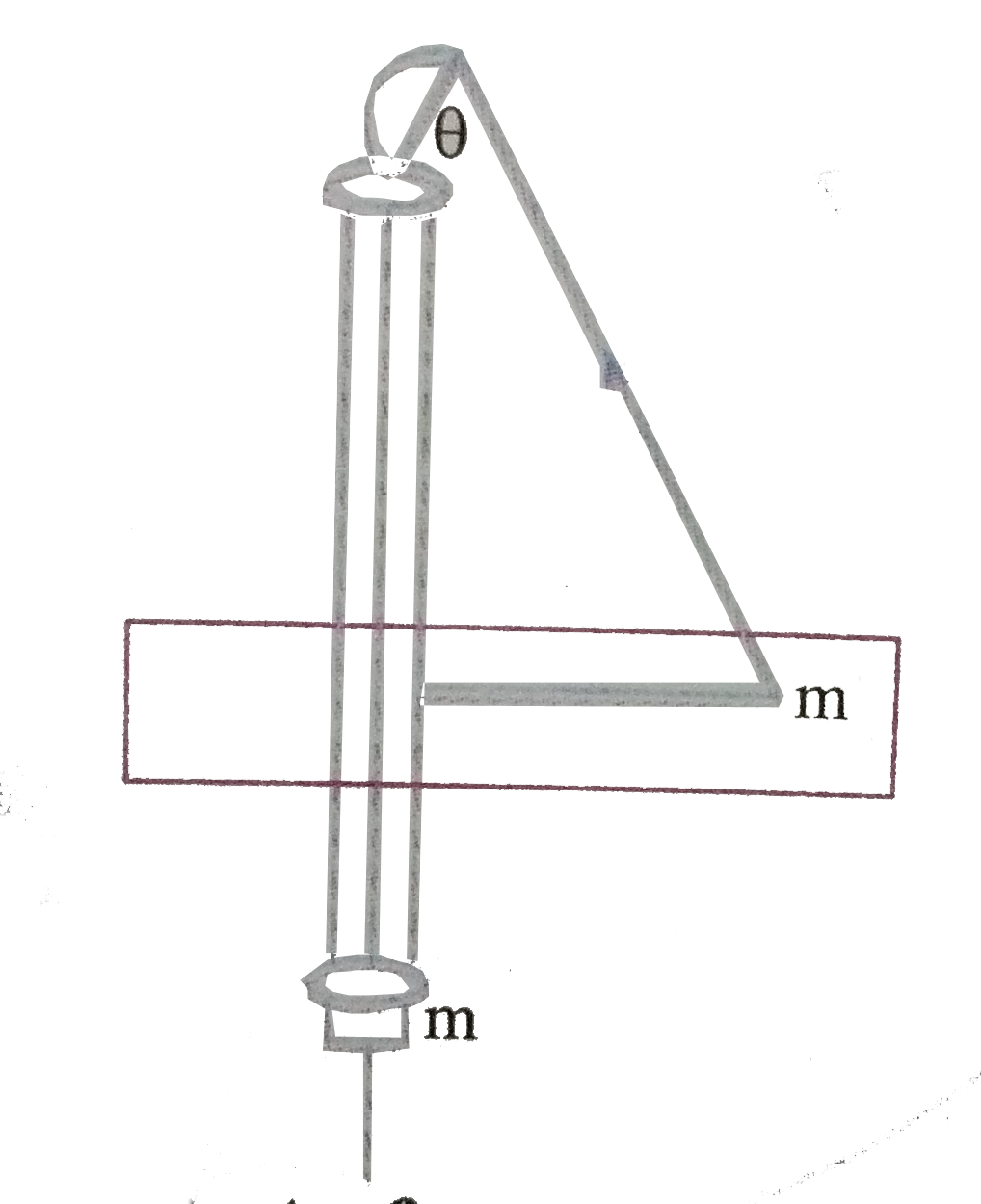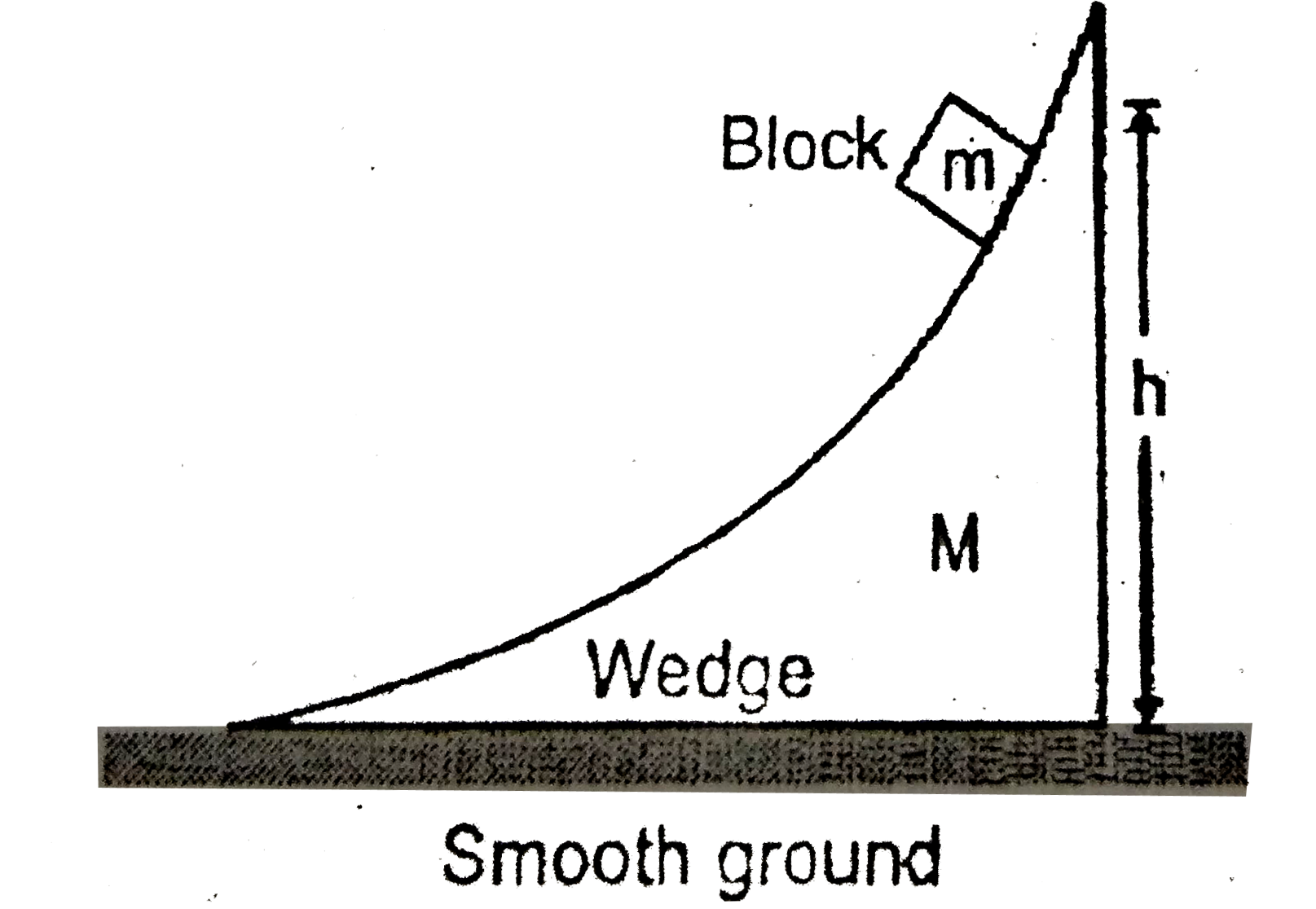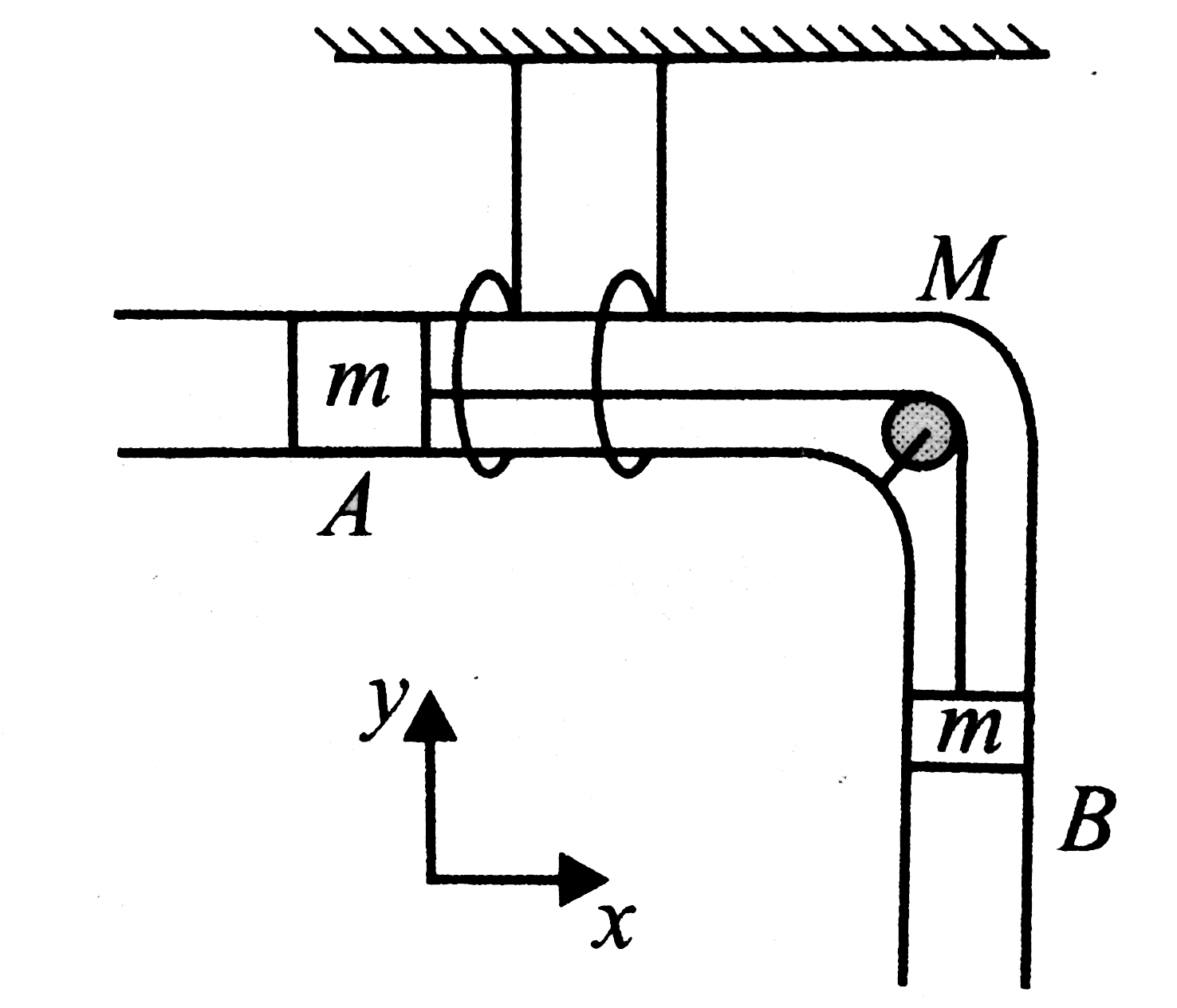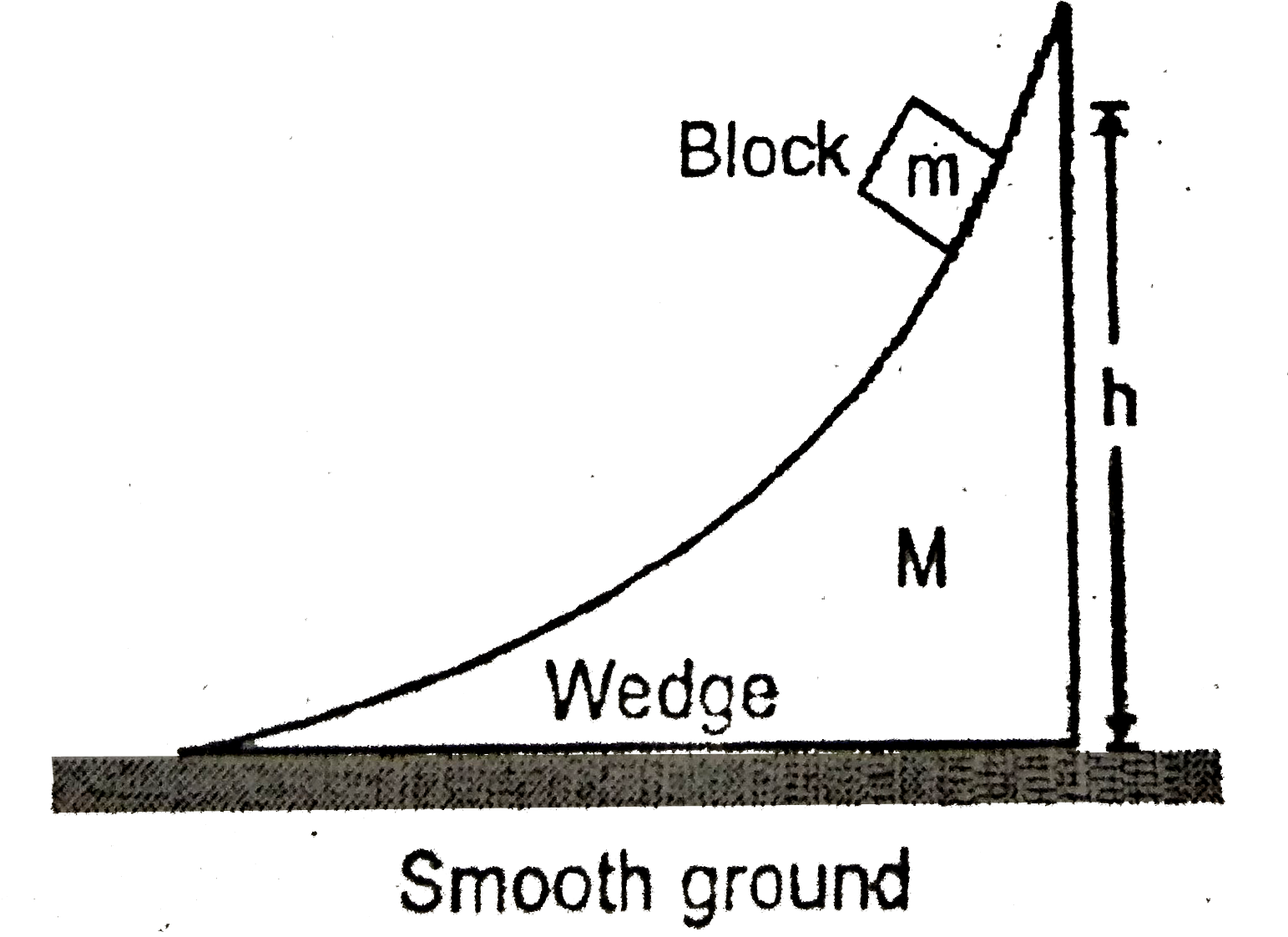A smooth tube of certain mass is rotated in a gravity-free Space and released. The two balls shown in Fig move towards the ends of the tube. For the whole system, which of the following quantities is not conserved.

Angular momentum
Linear momentum
Kinetic energy
Angular speed
The correct Answer is:D
(D) As Στ=0, Angular momentum, linear momentum remains conserved.
As the two balls will move radially out, I changes. In order to keep the angular momentum (L=Iω) conserved, angular speed (ω) should change Hence (D).
Topper's Solved these Questions
- DAILY PRACTICE PROBLEMSBook:RESONANCEChapter:DAILY PRACTICE PROBLEMSExercise:dpp 66
Explore 4 Videos
- DAILY PRACTICE PROBLEMSBook:RESONANCEChapter:DAILY PRACTICE PROBLEMSExercise:dpp 67
Explore 2 Videos
- DAILY PRACTICE PROBLEMSBook:RESONANCEChapter:DAILY PRACTICE PROBLEMSExercise:dpp 64
Explore 5 Videos
- CURRENT ELECTRICITYBook:RESONANCEChapter:CURRENT ELECTRICITYExercise:Exercise
Explore 54 Videos
- ELASTICITY AND VISCOCITYBook:RESONANCEChapter:ELASTICITY AND VISCOCITYExercise:Advanced Level Problems
Explore 9 Videos
Similar Questions
A large mass M and a small mass m hang at the two ends of string passing through a smooth tube. The mass m moves around in a circular path in a horizontal plane. The length of the string from the mass m to the top of the tube of the tube is l and θ is the angle this length makes with the vertical. What should be the frequency of rotation of the mass m so that M remains stationary ?
View SolutionA small ball strikes a stationery uniform rod, which is free to rotate, in gravity-free space. The ball does not stick to the rod. The rod will rotate about
View Solution
Knowledge Check
Two point masses m1 and m2 at rest in gravity free space are released from distance d. Find the velocity of the CM of the system at the time of collision of particles
AZeroB2C3DNoneIn an elastic collision of two billiard balls which of the following quantities is not conserved during the short time of collision :
AMomentumBTotal mechanical energyCKinetic energyDNoneA ball of mass m is attached to a string whose other end is fixed. The system is free to rotate in vertical plane. When the ball swings, no work is done on the ball by the tension in the string. Which of the following statement is the correct explanation?
ATension is always perpendicular to the direction of motion of the ball.BTension is an internal force for the ball.CTension is an external force for the ball.DSince the ball is swinging about the axis, total displacement is zero.
A large mass M and a small mass m hang at the two ends of string that passes through a smooth tube as shown in fig. The mass m moves around in a circular peth which lies in a horizantal plane. The length of the stribng from the mass m to the top of the tube is of length l and θ is the angle this length makes with the vertical, what should be the frequency of rotation of the mass m so that M remains stationary if M=16kg,m=4kg,l=1m and g=π2m/s2

View SolutionA block of mass m slides down a wedge of mass M as shown . The whole system is at rest , when the height of the block is h above the ground. The wedge surface is smooth and gradually flattens. There is no friction between wedge and ground.

If there would have been friction wedge and block , which of the following quantities would still remains conserved ?
View SolutionIn Fig., a hollow tube of mass M is free in horizontal direction. The system is released from rest. There is no friction present. The tube and blocks are taken as system.
i. Momentum of the system is conserved in x-direction.
ii. Speed of A w.r.t. M= speed of B w.r.t. M.
iii. Trajectory of centre of mass is X-constant. iv. Centre of mass has finite acceleration.
Evaluate the above statements and choose the correct option from the following:

View SolutionA block of mass m slides down a wedge of mass M as shown . The whole system is at rest , when the height of the block is h above the ground. The wedge surface is smooth and gradually flattens. There is no friction between wedge and ground.

As the block slides down, which of the following quantities associated with the system remains conserved ?
View SolutionA solid sphere is rotating in free space. If the radius of the sphere is increased keeping mass same which one of the following with not be affected ?
View Solution